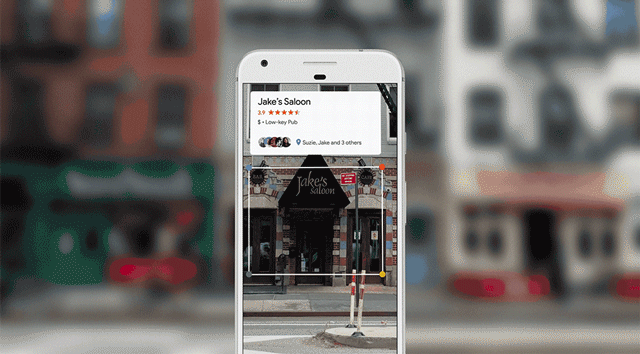
As we move past AR and VR’s excitement-fueled early stages, we’re hearing lots of “reality check” rhetoric (including our own). Insiders like Matt Miesnieks and Michael Abrash have adeptly challenged common sentiments on the timing of “true AR’s” arrival.
After years studying mobile and location based technologies, we’ll add another item to the list of sometimes-overlooked technical factors: location data. Though admittedly unsexy, geo-relevant data will play a critical part in the graphical overlays that are core to AR’s vision.
By “overlooked,” one example is Pokemon Go. Because it rose to prominence so quickly, there was a general under-appreciation for the location tags that make the whole thing work. It was built on the arcitecture of Niantic’s Ingress game whose location tags were set over years.
As background, rudimentary AR such as Pokemon Go sometimes use geotagged data to position graphics. SLAM-based AR, such as ARkit, conversely uses depth mapping and object recognition to register objects and then add dimensionally accurate graphics that have greater “permanence.”
Though the latter is certainly a more advanced form of AR, it will still benefit from location data such as business/product details or lat-long. This one-two punch will especially be additive in apps for navigation, local discovery, tourism, retail and several other location-relevant use cases.

Design Concepts
One example of where location data will add lots of value is ARkit demos like this, letting you navigate to products in a retail setting. It’s exciting to be sure, but a design concept. The fully-realized vision involves a dizzying array of unique and changing store and inventory data.
Luckly a few startups have spent years building systems that collect, clean and optimize geo-data. Exemplars include Aisle 411 for store layouts and product data (already working with AR). Meanwhile, Yext aggregates and cleans business details such as “name, address place” (NAP).
Google Lens is another example of where this type of data is needed. Holding a phone up to a storefront to get real-time details, reviews and operating hours is accomplished through object recognition using Street View imagery, as well as Google’s (GMB) local business data.
Google’s visual positioning service (VPS) is probably an even better example. Its unveiling included a controlled-environment demo for an AR-assisted screwdriver search at a Lowes store. In practice, that requires product and blueprint data, and 3d scans of hundreds of store locations.
Google will pull it off, but how it gets those scans is the wild card. I predict they’ll crowdsource some of it, just like mapping and street view accuracy/editing. Or they’ll gamify it, compelling unsuspecting gamers to map retail spaces while they think they’re catching cartoon monsters.
There’s similarly been digging into iOS11 beta, revealing AR-based navigation features. This could be an extension of Apple Maps and apply to indoor navigation. It’ll no doubt carry a slick interface, but as Apple learned from mapgate, it will need location data to function.
Prime Position
Either way, a future that’s heavy on navigational AR or visual search will have a massive reliance on location data (just as core search does). Therefore, value and demand are boosted within that world for anyone who holds unique local data sets — everything from NAP to snaps.
Speaking of Snap, it has validated this principle through two recent acquisitions that support a location data play: Placed and Zenly. These moves follow geo-filters in Snapchat’s march towards more geo-relevance for shared snaps, and AR content like World Lenses.
Meanwhile, companies like Foursquare are building a business around location data. And it’s not just structured data like correct lat-long, but unstructured data that’s harder to get and potentially more valuable. Think: location popularity, customer demographics, and other business attributes.
Generally supporting this, the Economist recently wrote that data is the new oil. That works on metaphoric levels regarding economic impact. But it also applies literally: companies built on data — Google, Amazon, Facebook — have valuations approaching the ExxonMobils of the world.
As for AR, the sector has some big technical challenges so can be forgiven for not thinking about local data just yet. But it will come to realize that differentiation stems from a fundamental ability to locate and qualify objects — not just front-end design — which in turn stems from location data.
Of course data isn’t as sexy as the AR-rendered dragon that flies across your living room (or more aptly, the “barmaid” from Silicon Valley). But it’ll be a primary source of differentiation and thus value in immersive tech. And the dollars it creates could arguably have some sex appeal.
For a deeper dive on AR & VR insights, see ARtillry’s new intelligence subscription, and sign up for the free ARtillry Weekly newsletter.
Disclosure: ARtillry has no financial stake in the companies mentioned in this post, nor received payment for its production. Disclosure and ethics policy can be seen here.
Header image credit: Aisle 411
